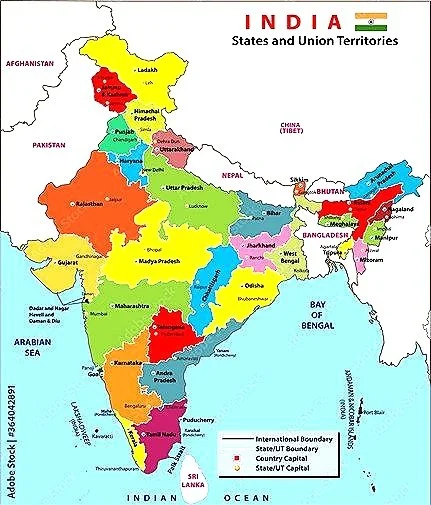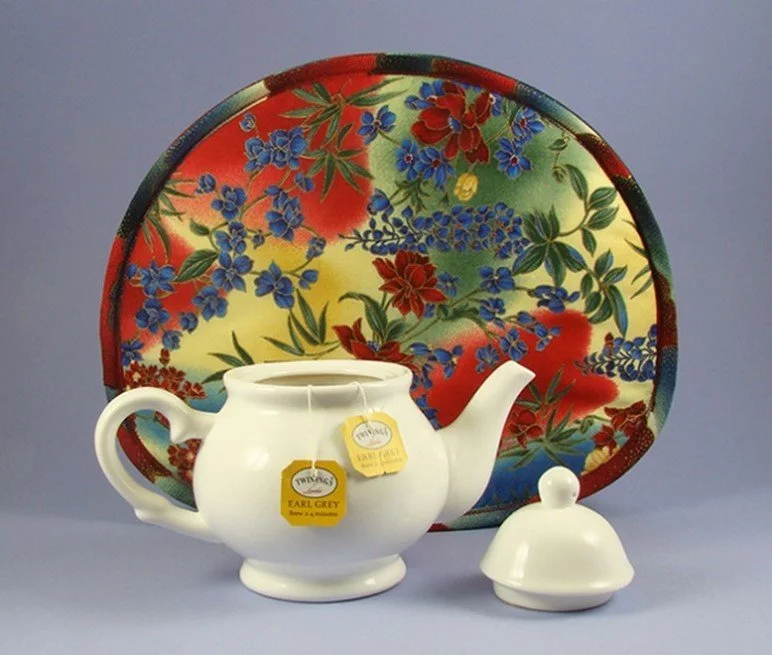India’s Tea Production: a cozy introduction
By Perry Luckett, TeaManToo
With a rich history, India has emerged as one of the largest tea producers globally. From the rolling hills of Darjeeling to the abundant plains of Assam, the country's varied geography, favorable climate, and skilled labor force contribute to its notable success in the tea industry. In this blog we’ll explore tea production in India, covering its significance, methods, and influence on the nation's economy and heritage.
India’s contributions to our teapot cover centuries
Tea production in India dates back centuries, with its roots intertwined in legend and colonial history. Legend has it that Prince Bodhidharma, an ancient Indian sage, introduced tea to China. Later, during the colonial era, the British East India Company started tea cultivation in India, beginning with Assam in the early 19th century. The British recognized India's favorable climate and fertile soil, making it ideal for cultivating tea. Thus, India's tryst with tea began, laying the foundation for an industry that continues to flourish to this day.
India’s geographical diversity underlies its success in tea production
India is known for its diverse tea production, having five major geographical regions that produce teas with varying general characteristics. But specific tea estates within each region can produce teas with subtle variations in flavor, aroma, and appearance. Tea production methods, harvesting seasons, and elevation can also influence the properties of teas from each region.
1. Assam: Located in the northeastern part of India, Assam is famous for its robust and bold black teas. The teas from this region have strong, malty flavor, deep reddish-brown liquor, and rich aroma. Assam tea is often used in breakfast blends and is ideal for those who prefer a full-bodied cup of tea.
2. Darjeeling: In the foothills of the Himalayas in West Bengal, Darjeeling is renowned for producing some of the finest and most sought-after teas in the world. The high-altitude plantations and misty climate give the tea a unique muscatel flavor: fruity and floral with a delicate astringency. The teas have a light golden liquor and a complex aroma. Darjeeling teas will grace your teapot with a cozy range of black, green, white, and oolong varieties.
3. Nilgiri: From the southern state of Tamil Nadu, the Nilgiri region produces teas that are light, fragrant, and brisk. Nilgiri teas have a smooth, mellow flavor with hints of fruitiness and are often used in blends or as a base for flavored teas. They brew into a bright, golden liquor and are known for their refreshing taste.
4. Kangra: Located in the state of Himachal Pradesh, Kangra Valley produces teas with unique character. A teapot filled with Kangra tea has a cozy floral aroma, smooth texture, and mild taste. The teas from this region are often compared to Darjeeling teas because they have similar growing conditions and flavor profiles.
5. Munnar: In the southern part of India Munnar, Kerala, is known for its high-grown teas. The teas from this region have a bright, brisk flavor with a medium body. Munnar teas are often used in blends and are appreciated for their refreshing and aromatic qualities.
Tea in India demands careful planning, cultivation, and harvesting
The tea plant, Camellia sinensis, requires specific combinations of temperature, rainfall, and altitude to thrive. Growers typically propagate plants from seeds or cuttings and nurture them in nurseries before transplanting them to the fields.
At harvest time skilled plantation workers handpick only the young, tender leaves. By ensuring they pluck only the top two leaves and a bud, they guarantee the highest quality. These leaves undergo a series of processing steps, which include withering, rolling, fermenting (oxidizing), fixing, shaping, drying, sorting and grading, and packaging. Careful attention to these steps contributes to the tea’s final flavor, aroma, and appearance.
Indian tea factory equipment and production line
Withering: After harvesting, the tea leaves are spread out on large trays or racks to wither. This step exposes the leaves to controlled temperature and humidity in order to reduce moisture content and make them pliable. Withering can occur naturally or with the help of fans.
Rolling: Once the leaves have withered, they are rolled to break down the cell structure and start oxidation. Rolling can be by hand or by using mechanical rollers. This step helps release enzymes and essential oils, which develop flavor and aroma.
Oxidizing: In this step, the rolled leaves are left to oxidize (ferment). The leaves are spread out in a cool, humid environment so chemical reactions can take place. The level of oxidation depends on the desired type of tea—a little for green tea and a lot for black tea. During oxidation, the leaves change color and develop characteristic flavors.
Fixing: To halt oxidation the leaves undergo high heat or steam in a fixing step (also known as kill-green). Fixing helps preserve the wanted level of oxidation and prevents further enzymatic activity. It also removes excess moisture from the leaves.
Shaping: Following fixation, the tea leaves are shaped into their final form. This can involve rolling, twisting, or curling, depending on the desired tea type. Shaping helps give the leaves their distinctive appearance, which affects the tea's brewing and steeping properties.
Drying: After shaping, the tea leaves are dried to reduce moisture content and stabilize the final product. Usually, hot air or direct heat completes this step, which helps extend the tea’s shelf life by preventing mold growth and preserving flavor.
Sorting and grading: The dried tea leaves are sorted based on their size, shape, and quality. This step involves removing any impurities, such as twigs or stems, and separating different grades of tea. The grading system varies between tea-growing regions and can include categories such as whole leaf, broken leaf, fannings, and dust.
Packaging: Finally, the sorted and graded tea gets packaged for distribution and consumption. It’s often sealed in airtight containers or bags to maintain freshness and aroma.
Of course these processing steps can vary for different types of tea, such as white, oolong, or herbal varieties. Also, tea producers may use varying techniques to create unique flavors and characteristics.
India’s production for your teapot covers economic and cultural benefits
Tea production is very important to India's economy, offering employment to millions of people and contributing to the nation's foreign exchange earnings. The industry supports a vast workforce, including tea plantation workers, pluckers, processing unit staff, and logistics people. Tea auctions in Kolkata and other cities are a platform for buyers and sellers who trade tea and largely determine world tea prices. India's tea exports have steadily grown, with the United States, Russia, and the United Kingdom being major importers, further improving India's economic standing.
Beyond tea’s economic benefit to India, it also is an integral part of the nation's cultural heritage. The tea-growing regions of Darjeeling, Assam, and Nilgiri produce distinct tea varieties, creating a sense of pride and identity for the local communities. Tea tourism has gained popularity, with travelers exploring the plantations, witnessing tea production, and attending tea-tasting sessions. This tourism enables visitors to connect with India's tea heritage and fosters a deeper appreciation for the craftsmanship and labor involved in every cup.
Tea production in India is a captivating blend of tradition, craftsmanship, and economic prowess. From the spectacular landscapes of Darjeeling to the fertile plains of Assam, India's varied geography provides the perfect canvas for cultivating teas that capture the world's taste buds. With a strong infrastructure, skilled labor force, and rich cultural heritage, India continues to lead the global tea industry. As tea enthusiasts around the world savor a cup of Indian tea, they participate in a centuries-old legacy that connects tradition, economic growth, and the appreciation of a delightful brew.
Our Tea Tabard™ tea cozy and Kup Kap™ cup cover enhance your tea experience
Experiencing India’s (or any other) tea at its best requires keeping it hot, and that’s where our products take the stage. Our Tea Tabard™ teapot cozy features a different beautiful and complementary fabric pattern on each side, which gives you added options for matching your décor. Each lined cozy has a rounded bottom that keeps the cozy in contact with your counter or table surface. This special design feature overcomes a problem other cozies experience with gapping over the rounded surface of most teapots, thus allowing outside air to cool the pot and your tea.
But our main attraction is 200-weight Thinsulate™ insulation by 3M™. It uses lofted layers of fibers to keep in maximum heat, even when wet—and after repeated washings.
Stylish Kup Kap™ cup lids from Koffee Kompanions™ keep your tea hot for at least 30 minutes, which means you get to enjoy its aroma and flavor the way it was intended: hot and cozy. Of course they also work great for other hot beverages, and our larger size (6 inches in diameter) also neatly covers small bowls to keep food hotter, longer.
Six of 28 Kup Kap™ patterns available at www.koffeekompanions.com








